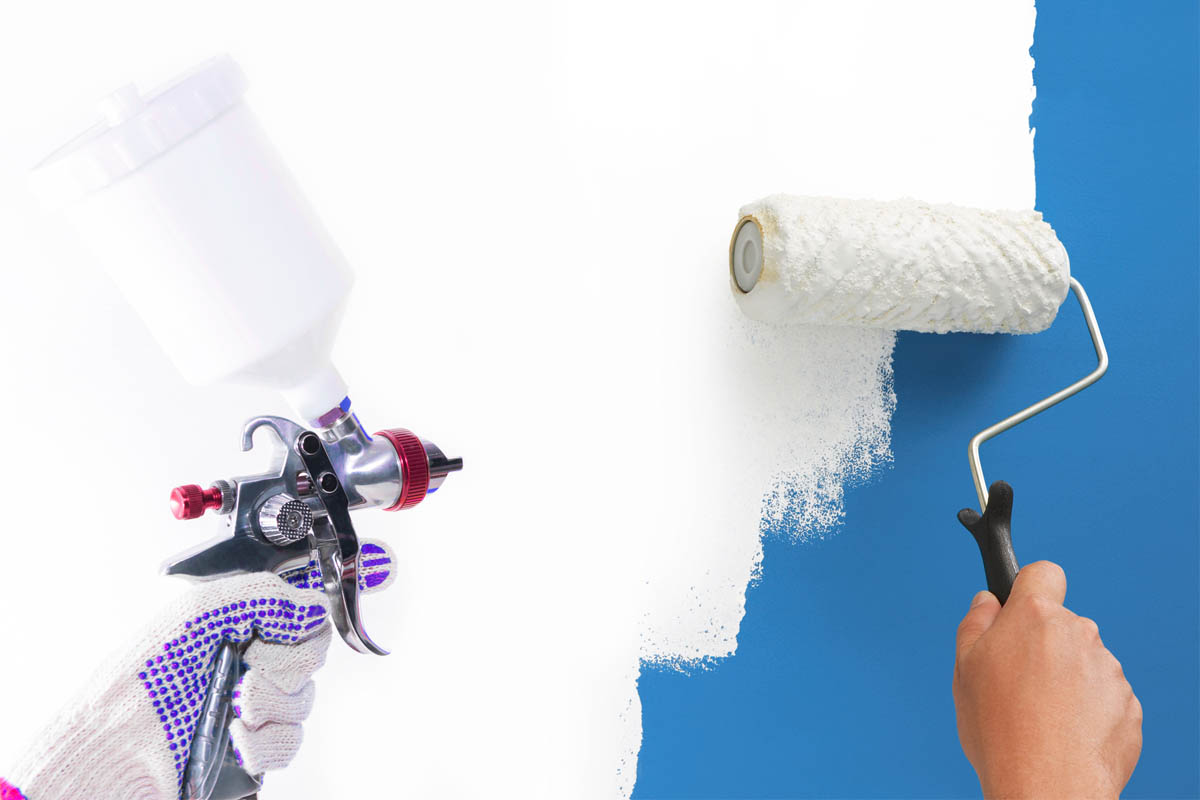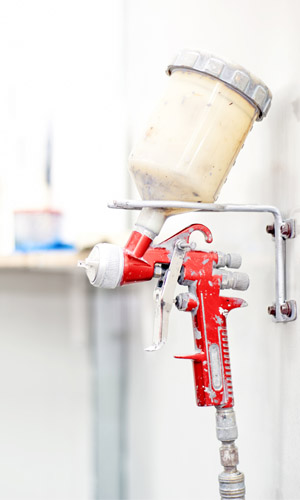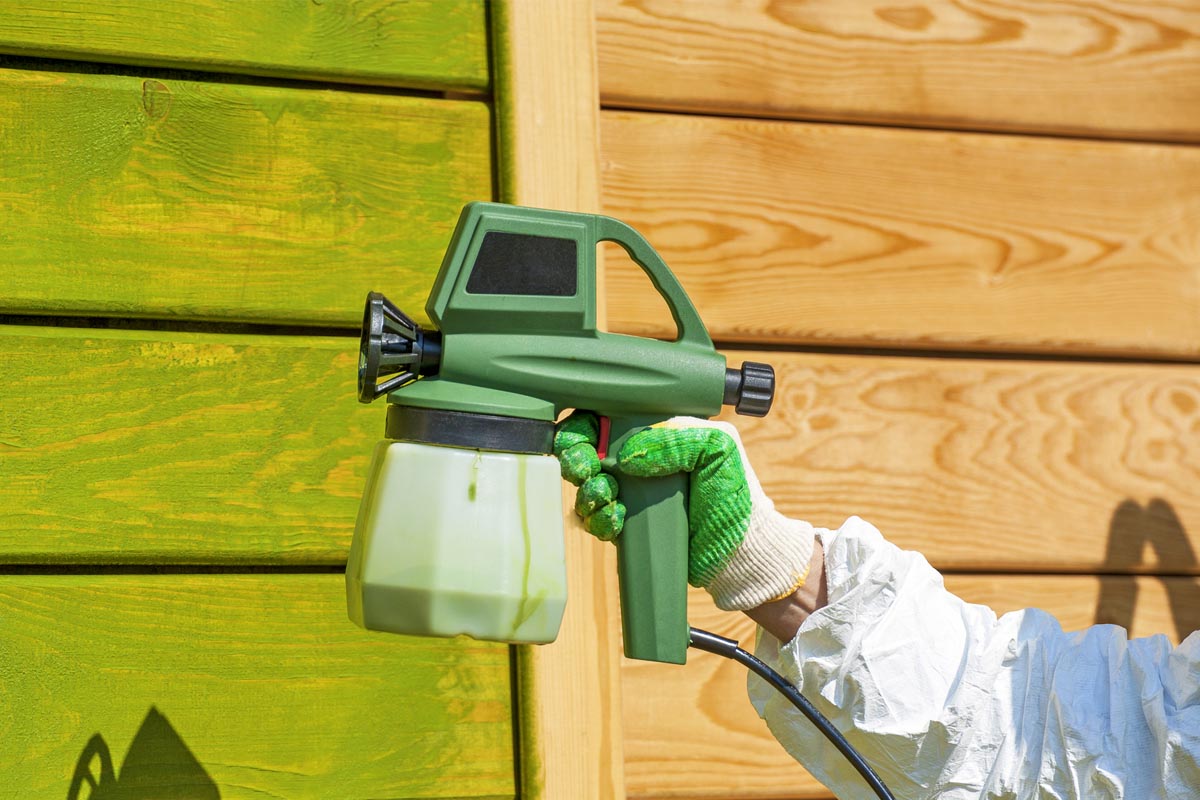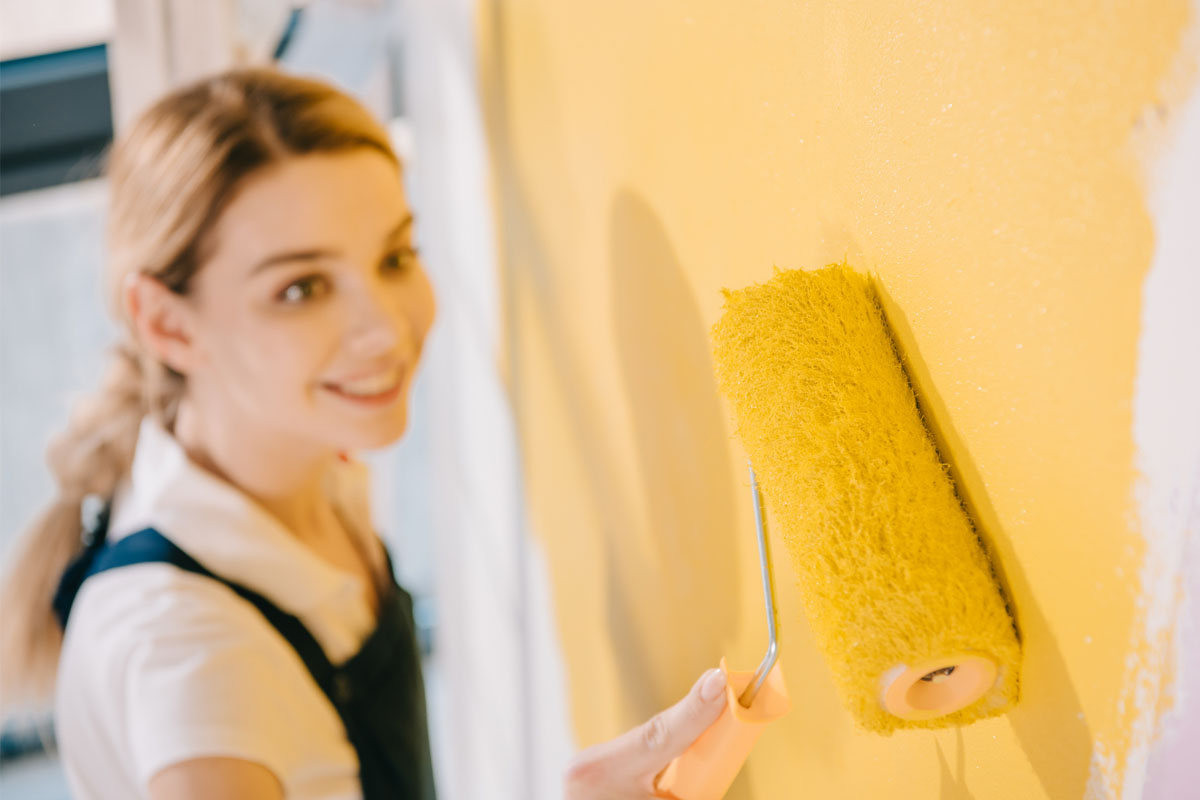

We may earn revenue from the products available on this page and participate in affiliate programs. Learn More ›
Whether you’re painting a room or the siding on your house, you have quite a few decisions to make. Color choices, types of paint, and application methods are probably at the top of the list. That’s right, brushes and rollers aren’t the only way for a homeowner to apply paint anymore. Paint sprayers are now options for all skill levels. For the do-it-yourselfer, these spray guns are small, hand-held, and use compressed air to apply a fine mist of paint.
Using a paint sprayer may sound like a faster application method, but that’s not necessarily the case. The surface, its location, and how much time you have are factors to consider when picking your tool for your paint job. Read through all the pros and cons of spraying vs. rolling paint to see which tool and technique best suits your project.

Spraying paint isn’t as easy as you may think.
If you’ve never used a paint sprayer before, the first time may not be as easy as it looks. Achieving an even coat with a paint sprayer takes a lot of trial and error. Beginners often experience drips, runs, uneven coverage, and get paint all over the place. But that doesn’t have to stop you! Sprayers come in affordable models that are easy to use and are perfect for practice. If you can spare a bit of paint to test your spraying skills, by all means, give it a try.
Rolling paint could be just as fast as spraying.
Most DIYers consider spraying vs. rolling paint because they think they’ll get the project done in a fraction of the time. That’s not necessarily true. When you use a sprayer, the time you save in application you’ll spend assembling your tools, carefully masking the area (more on that below), and cleaning up. The prep work with spraying takes so much longer than with rolling paint that the total project time comes out to about the same.
Another thing to consider: If you’re interrupted or tire of rolling, stopping your project and continuing another day isn’t a big deal—you can quickly wash up your roller or stow your paint-covered tools in a zip-lock bag to keep them fresh until you resume. But once you’ve filled a sprayer with paint, you’re committed until you’re done as paint left in the sprayer’s hose or gun will dry and cause clogs.

Rolling paint is the frugal homeowner’s choice.
Affordable, entry-level paint sprayers start at around $100, with most quality brands costing twice that and more. Even renting a paint sprayer could cost you $40 a day. Then, if you choose to use a sprayer anyway, you’ll still need to buy more paint: Sprayers use about 33 percent more paint than rollers do. For a fraction of the cost, rolling paint is the budget-friendly way to go.
Spraying paint reaches where a brush can’t.
With a sprayer, you can apply paint into the narrowest of crevices, something that’s difficult to do with a brush. This comes in handy for all the nooks and crannies of textured surfaces like popcorn ceilings, brick walls, crown molding, cornices, or lap siding, and hard-to-reach places on furniture. Also, because the sprayer aerates the paint, an experienced operator achieves a smoother finish without lap marks. However, sprayed paint won’t adhere to a dirty surface the way rolled paint will. So, if you plan to use a paint sprayer, always take the time to scrub the wall first for the best results.

Both a sprayer and a roller are messy.
Spraying paint not only requires masking off edges and trim, as you do with a roller. You also have to mask off every single thing you don’t want touched by overspray—windows, floors, and ceilings—either with film or a drop cloth. With either method, if you don’t mask properly, you’ll find yourself cleaning up your messes. The difference is that a roller may leave behind drips on the floor and swipes on the trim but a sprayer may cover surfaces in a fine mist.
Paint sprayers are best used outside or in empty houses.
The high risk of overspray involved with the use of a sprayer makes it best suited for outdoor projects or indoors in an emptied, unoccupied space. The time you’ll save in application isn’t worth the heartache if you find your masking wasn’t as thorough as it should have been. Just know that if you’re painting outside, a sprayer isn’t the best option for a windy day.

You can get the best of both worlds.
For textured surfaces like rough wood siding, get the speed of a sprayer and the superior coverage of a brush with back-brushing. For this technique, you’ll need a helper. One person sprays and the other uses a dry brush to immediately go over the paint with long even strokes as it’s applied. This gives you the speed of the sprayer while the brush evens out the coats and works the paint into the surface for better adhesion.
